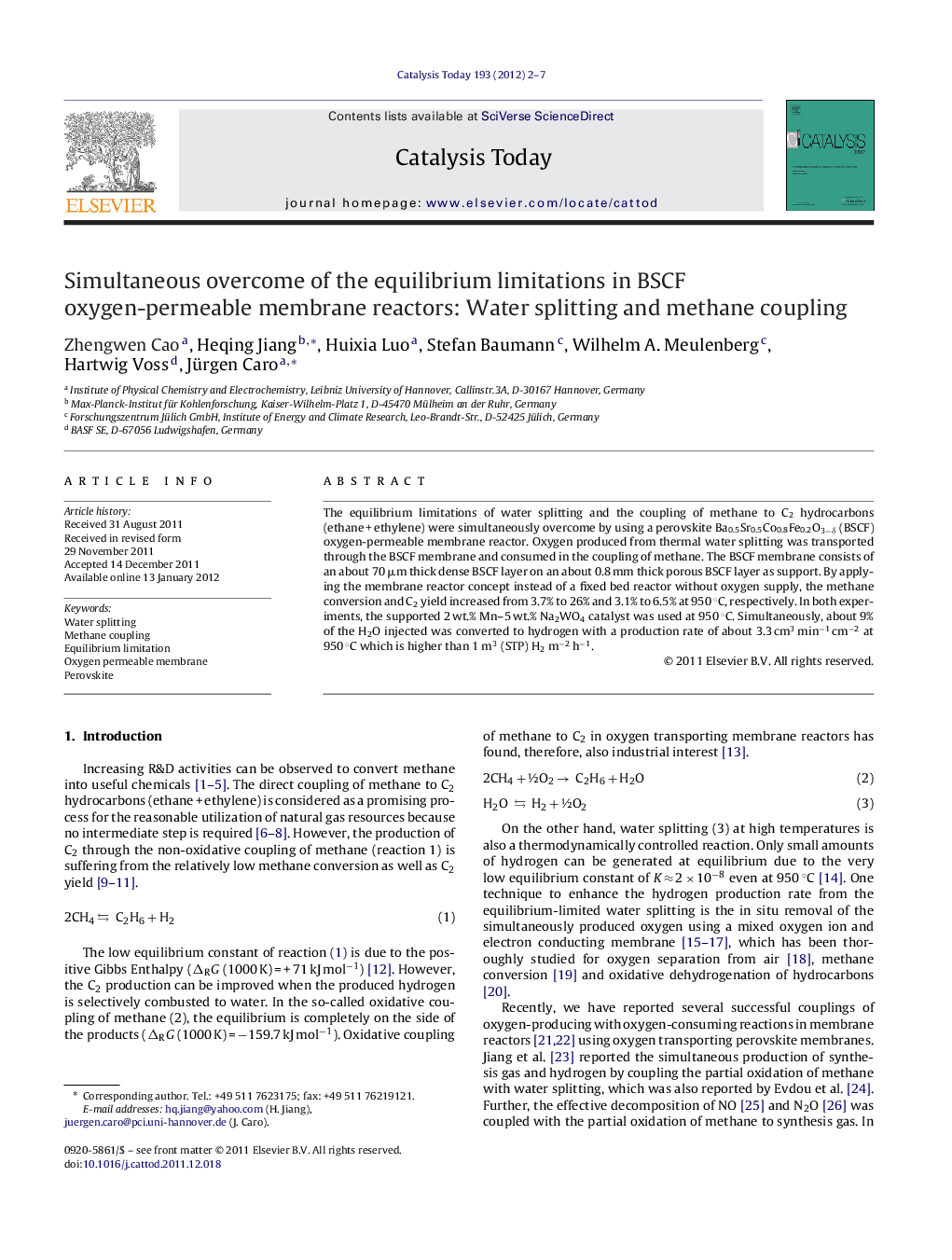| Article ID | Journal | Published Year | Pages | File Type |
|---|---|---|---|---|
| 55055 | Catalysis Today | 2012 | 6 Pages |
The equilibrium limitations of water splitting and the coupling of methane to C2 hydrocarbons (ethane + ethylene) were simultaneously overcome by using a perovskite Ba0.5Sr0.5Co0.8Fe0.2O3−δ (BSCF) oxygen-permeable membrane reactor. Oxygen produced from thermal water splitting was transported through the BSCF membrane and consumed in the coupling of methane. The BSCF membrane consists of an about 70 μm thick dense BSCF layer on an about 0.8 mm thick porous BSCF layer as support. By applying the membrane reactor concept instead of a fixed bed reactor without oxygen supply, the methane conversion and C2 yield increased from 3.7% to 26% and 3.1% to 6.5% at 950 °C, respectively. In both experiments, the supported 2 wt.% Mn–5 wt.% Na2WO4 catalyst was used at 950 °C. Simultaneously, about 9% of the H2O injected was converted to hydrogen with a production rate of about 3.3 cm3 min−1 cm−2 at 950 °C which is higher than 1 m3 (STP) H2 m−2 h−1.
Graphical abstractFigure optionsDownload full-size imageDownload high-quality image (86 K)Download as PowerPoint slideHighlights► To overcome thermodynamic restrictions, (i) methane coupling and (ii) water dissociation were combined in a catalytic membrane reactor with an oxygen-transporting BSCF membrane. ► On the water side of the membrane, more than 1 m3 (STP) H2 m−2 h−1 can be produced by thermal water splitting. ► Through the coupling strategy, oxygen is transported via the BSCF membrane from the water to the methane side of the membrane. ► On the methane side of the BSCF membrane the methane conversion increased from 3.7% to 26% and the C2 yield from 3.1% to 6.5%.
